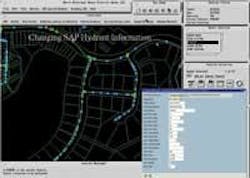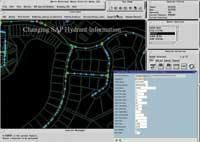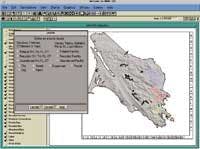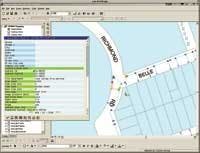Conserving Water, Conserving Costs: Integrating Work Management with CIS, GIS
Work management systems that integrate customer information systems (CIS) with business databases and geographic information systems (GIS) are changing the way utilities meet pressures to run an efficient and customer-centric operation. As one of the nation’s latest utilities to implement work management technologies, Marin Municipal Water District (MMWD) recently integrated an off-the-shelf customer information CIS product from SAP to process asset and customer-related work orders. Coupled with GIS, the project has reduced work and labor cost and streamlined time management.
Marin Municipal Water District provides drinking water to approximately 185,000 people in a 147-square-mile area of Marin County in Northern California. With a focus on preserving the rivers, streams and natural resources endowed to the county, the water utility also prides itself on providing an active water conservation program that encourages the protection of its most precious resource: the Mount Tamalpais Watershed.
In 2001, Marin Water reevaluated its legacy systems and embarked on a restructuring program combining an integrated CIS product and GIS technology to provide operational efficiencies, an enhanced level of customer service and data information while maintaining its commitment to water conservation.
The new system has allowed the utility to make informed decisions about inventory, conservation and budgets. Using the advantages of customer information management systems, Marin Water reduced labor and time management from hours to minutes in many cases - taking advantage of the real synergy gained by integrating CIS and GIS.
Legacy Systems
Marin Water’s systems restructuring project began with an evaluation of its information management architecture. Until 2001, the utility’s infrastructure consisted of an isolated general ledger that was not linked to another 20 systems in the field. Warehouse and asset tracking, utility billing and the general ledger operated under distinct systems, costing Marin Water in slow customer service times, sluggish information access and time-delayed decision making when it came to procurement budgets. Customer billing and meter information collection was a time-intensive process that left Marin with inaccessible billings until the month-end close.
“We really lacked the detailed timely information necessary to make quick decisions about inventory supply and capital projects funding status,” said Terry Stigall, MMWD Finance Manager.
MMWD also maintained a database containing all water infrastructure information, including material and pipe specifications needed for repairs and fulfillment orders. At the time, it relied on GIS to update, inventory and maintain the database of water infrastructure information and to painstakingly re-create paper maps used by staff in the field. Relevant information was kept throughout the utility’s five offices and because of the fragmented nature of the legacy system, crews had to gather field information from myriad locations across the utility’s service area.
New System
In 2001, Marin Water implemented an integrated systems architecture that replaced most of its legacy systems and gathered the entire capabilities of the utility under a single application and billing management system with a customer information management system. SAP guided the process to determine the right solutions and developed a platform to integrate customer information, utility billing, human resources, payroll, and asset tracking into a single system so that it could service residents under one record instead of multiple records.
“There was an overwhelming call by Marin Water staff and customers for real time information access. It was a key driver to integrate MMWD’s systems infrastructure,” said Bob Fairchild, I.T. Manager.
At the same time, Marin Water joined its CIS information database to its GIS system through an interface that allows users to access its equipment attribute data, located in its SAP records database. The new interface gives MMWD crews fast access to asset locations using up-to-date, accurate information.
“For MMWD field crews, the combination of work management systems and the GIS interface is especially useful for locating field information,” Fairchild said.
Conclusion
Industry best management practices encourages utilities to consider the value of an integrated approach: to offer its customers a more sophisticated level of service, including customer account information quickly and easily accessible by customer service staff as well as equipment data needed by field staff. Next-generation CIS systems allow utilities to not only know their customers, but to tailor their services to individual customers or groups of customers with the similar demographics: customers receive a correct bill on time, pay online and increase overall efficiency with fewer complaints that costs utilities both time and resources to address.
Within the first year of implementing the new systems, MMWD reduced the dollar volume of inventory by 25% by having warehouse information readily available. Instead of guessing, the utility can budget directly for projects, eliminating excess capital projects budget by 30%. Likewise, work flow - from pricing labor and repair costs to material locations - have all been streamlined using the integrated CIS and GIS systems. WW
About the Author
Gary Johnston is the Industry Solutions Director, Utilities at SAP America - a strategic business partner helping leading utilities execute their strategies. Johnston is responsible for all pre-sales support for customers in the utilities business sector in the United States. He has nearly 20 years of experience, including enterprise software selection, implementation, and sales and has been with SAP since 1998. Johnston has a Bachelors and Masters degree in Industrial Engineering and Management from Oklahoma State University.



